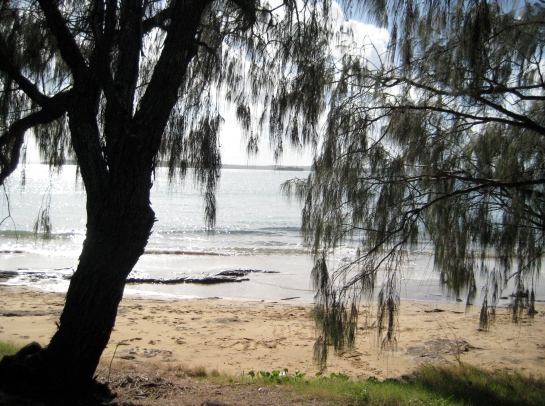The phone conversation went like this:
Me: I saw John Pilger’s new film Utopia in Dublin last week. Did you see it yet? What’s the reaction been like out there?
Them: No, I haven’t heard of it. Who stars in it?
Me: Um….. No, it’s a documentary film about White Australia’s treatment of Aboriginal people.
Them: Oh… (pause) No I haven’t heard of it…. (pause)… Pretty good treatment if you ask me though. There’s so many people claiming Aboriginal ancestry now, just to get more money from the government. Some of them are as white as you and me. It’s a joke. The whole Aboriginal thing is such a huge problem. It’s a hopeless situation and it’ll never change.
****
After I wrote my last post, ‘The Problem With the White Australian People‘, I’ve been trying the ‘problem’ label on myself, to see how it fits and how it feels again. To be the problem. It’s not a new feeling to me. I know it well from my teenage years & it’s a hard one to shake off. There is a numbing sense of impotency that accompanies the wearing of ‘the problem’ label. As soon as that label is pinned on your chest, you can feel your energy being sapped right out of your being. You certainly don’t feel empowered to bring forward your gift to the world, that’s for sure. You don’t feel like you even have a gift to bring forward.
****
Over the last few weeks I’ve been absorbed watching and re-watching a ground-breaking seven part series from SBS Television *’The FirstAustralians‘. I’m learning about Australian history for the first time in my life. I find it utterly compulsive viewing. The truth of what happened in my country. At last, here it is to know and memorise and shape our futures from. The history that I hungered to learn the truth about during my school years back in the 1960’s that I only had a hunch about. It was hidden from view back then, neatly tucked away somewhere outside our reach, screened off by an impenetrable wall of silence.
But it lived a full and graphic life in the shadows of my imagination nonetheless. And I’m sure I wasn’t the only white Australian kid who wondered endlessly what had happened to the Aboriginal people. The country seemed alive with their secrets, but the people were nowhere to be seen. I had an intuition that it was a story too full of horror and sorrow to really look at in the broad light of day. And that part, I now know, I got right.
So I have immense respect and gratitude to Rachel Perkins and the team of people who produced ‘The First Australians‘ documentary. It brings to life the events from 1788 right through to 1992, with Koiki Mabo’s famous challenge to the very foundation of white Australia. The documentary shows Australian history with all its raw misery and agonisingly cold hard facts that can’t be changed.
Now I have the names of the heroic leaders who tried so hard and against all odds to save their people from being wiped out. Now I’ve seen photographs of their faces. I’ve come to know them a little bit and to taste their courage. Now I’ve witnessed the test of their endurance.
I’ve seen photographs of the people being forced off their land. And now, at last, I know how it was done. Now I’ve been able to meet, via the screen, the people who were unfortunate enough to be the generation that faced what must have been the most terrible event in their long history. When they met my ancestors.
Now I know where the first people were while I was having my idyllic childhood, growing up carefree in their country. On their land. Wondering where they all were. Now I know what happened.
And now I’ve seen a map of Australia with the original nations marked out. The curved shapes of the boundaries and lovely rolling sounding names like Taungurong; Ngatatjara; Yarluyandi…. It’s not a thing to put away. Every day I take a few minutes to study it and to notice the shift slowly occurring to my white Australian, colonial thinking, with all its straight lines.
****
As well as revealing Australia’s true history, the ‘First Australians’ documentary also does something else. It provides testimony that those courageous people, the Elders of our past, succeeded. Their people were not wiped off the face of the earth. Here are their descendants speaking to camera. Telling their stories. They are just a few generations down the line from those people in the photographs who had lived on the land in another way, before the whitefella arrived and took it off them. They walk their country still and are piecing together their languages. And they’re reuniting with their culture and offering it as a precious gift to bring forward for everyone to share. They are not ‘the problem’. They are Australia’s bright future.
So I’ve been wondering how it came about, – by what consensus was it agreed, that the first Australians would become ‘the problem’. And how did that view become so widely held by such a majority of whitefellas, even to this day? And it doesn’t help to be told that “Oh, the same thing goes on all over the world.” What’s that supposed to mean?
I can now see that running away from ‘the problem’ didn’t help either, because when I fled to Ireland, I took me with me. And I am white Australian, no matter where I live. So the horrors of Australia’s past and the challenge to turn it all around, lie at my doorstep too, no matter where that doorstep happens to be.
* (I tried viewing ‘The First Australians’ online, but was unsuccessful. That could be because I’m not much of a techi though 😦 I ended up buying the series from Amazon. )

